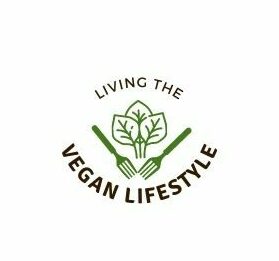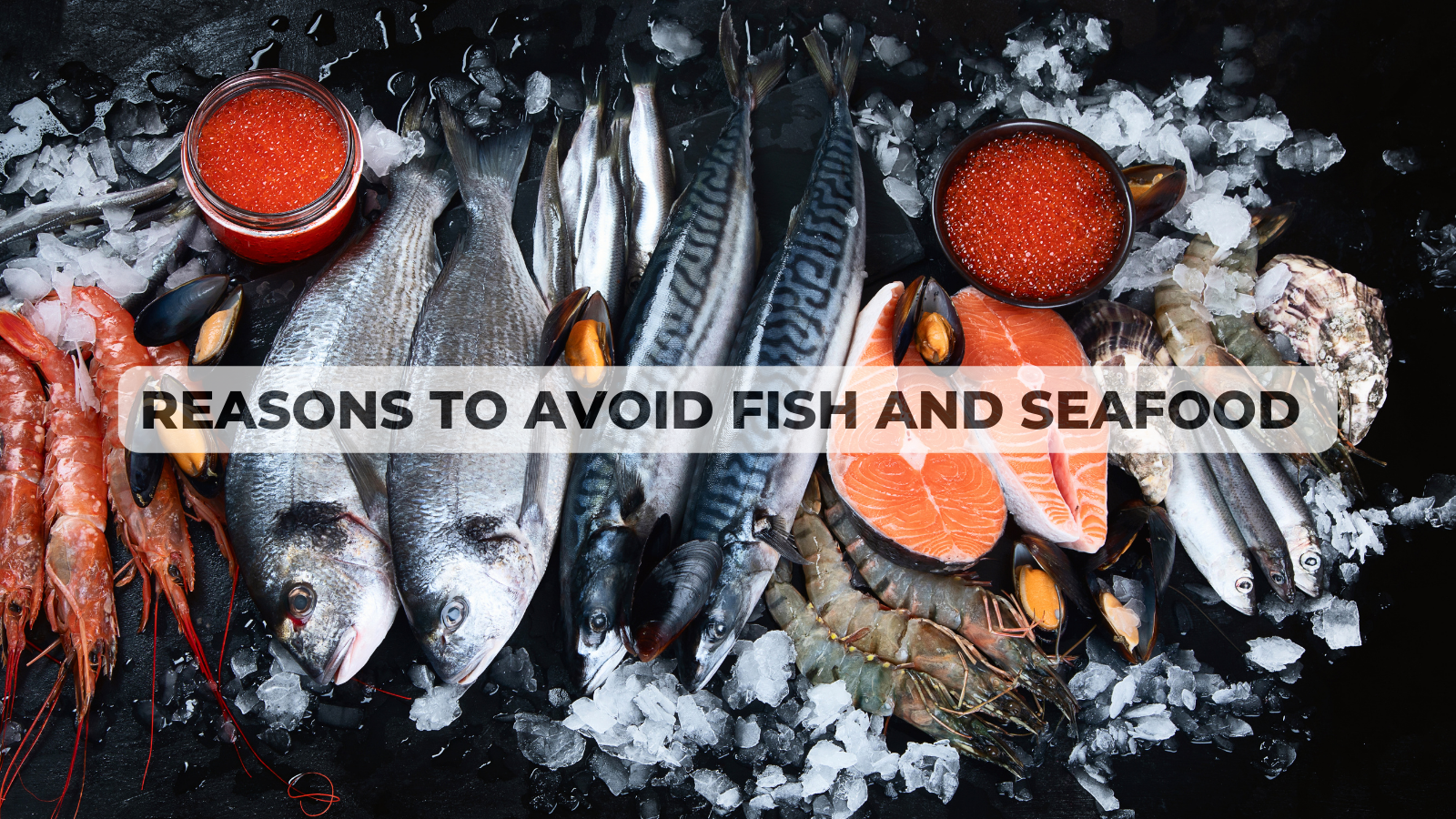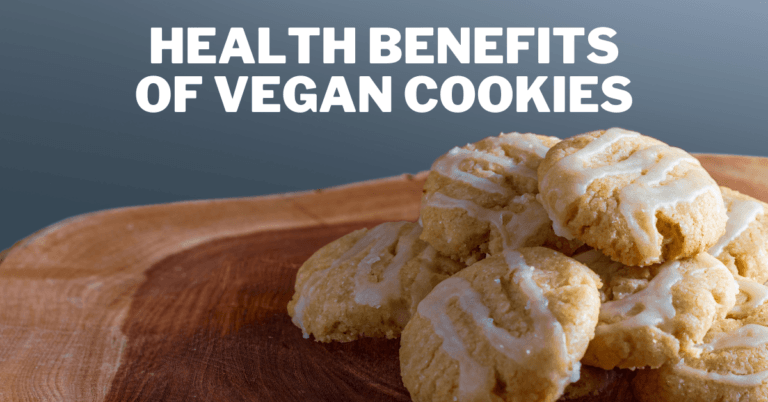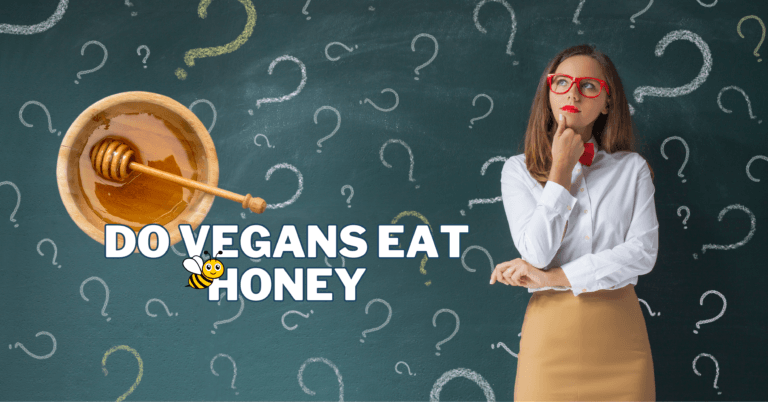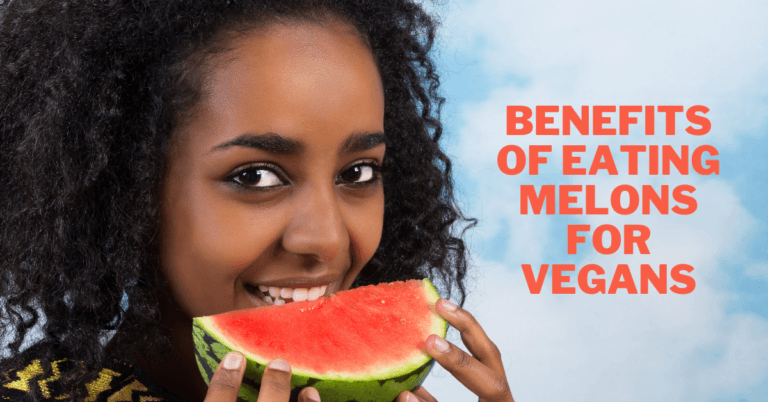Reasons To Avoid Fish And Seafood
Reasons To Avoid Fish And Seafood And What I Can Eat Instead
Our planet is at a critical turning point due to biodiversity loss, increased natural disaster frequency, and rising global temperatures.
Given the current global crisis, we must carefully consider our consumption choices to reduce our impact on the few remaining environmental resources.
One of the most effective ways to lessen your environmental impact is to consume less seafood, but there are other significant reasons to skip fish for dinner.
1. Child Labor Is Widespread
Did you know that the seafood on your plate likely required child labour to obtain? Around 60% of all children working as child labour worldwide, including in shrimperies and aquaculture, are employed in the agricultural sector, according to the United Nations Food and Agriculture Organization (FAO).
Children are kept out of school because they are involved in various dangerous jobs in the fishing industry, such as catching fish and fixing nets. The issue of child labour worsens as the world's appetite for seafood rises.
2. Seafood Industry Is Struggling With Traceability
The ability to fully identify a product's source or origin and the transactions between the time it was caught and the time it was sold is referred to as traceability in the global seafood trade.
However, since no standards are supported by an international organization to track and record the traceability of seafood, fraudulent mislabeling of seafood is rife. This is crucial for a product's legality and the food's safety.
More than 50% of the sushi fish in Los Angeles restaurants is mislabeled, according to a 2017 investigation.
According to a recent study by the Environmental Justice Foundation (EJF) in South Korea, a third of fresh fish and more than half of all sushi samples have incorrect labels.
Surprisingly, none of the samples of Chinese white shrimp were suitable species, and many of the fish samples were dolphin meat, which contains exceptionally high mercury levels.
Due to the lack of seafood traceability, it is common to be mislabeled as coming from an endangered or protected species, such as the finless porpoise.
The researchers stressed that this is a global issue as a large portion of seafood consumed in Korea is imported from China and Japan.
3. The Product Of Modern Slave Labour Is Cheap Seafood
Do you believe that slavery is a thing of the past? You might be mistaken, though, as there is ample evidence of modern slavery and labour exploitation in the seafood industry.
The issue is particularly pervasive in Southeast Asia; according to a Human Rights Watch report, Thailand's fishing industry, the fourth-largest seafood exporter, is rife with forced labour and human rights violations.
The Thai government was forced to act due to increased awareness, but recent reports have shown widespread exploitation continues today.
According to a 2017 study by the Issara Institute and the International Justice Mission, migrant workers in Thailand's fishing industry—most of whom are from Cambodia and Myanmar—have been held in debt bondage in 76 percent of cases.
Additionally, news stories have emerged highlighting labour exploitation on fishing vessels worldwide, including in the United States, China, and Taiwan.
4. Pesticide And Antibiotic Uses Are Extensive
Most fish sold today are farmed because overfishing has severely depleted fish populations.
Farmers frequently add antibiotics and pesticides to the water because fish farms house thousands of fish in confined spaces, making it simple for diseases and parasites to spread.
The relatively unrestricted use of some harmful antibiotics has encouraged the growth of antibiotic-resistant microbes, making it harder and harder to stop human disease outbreaks over time.
The consumption of antibiotic residues found in fish can also harm people, with side effects including lowered immune systems, cancers, birth defects, and problems with fertility.
5. Fish Are Disappearing
The global demand for seafood is growing much faster than fish can reproduce. The World Wildlife Fund estimates that over 30% of the world's fisheries are endangered.
Popular species like tuna are being overfished to dangerous levels, and many stocks face extinction if sustainable management practices are not implemented.
The absence of national and international regulation of the world's waters significantly contributes to overfishing.
The UN Food and Agriculture Organization found that fishing vessels fail to report 35 million metric tons of fish annually.
That's a problem because it makes it impossible to maintain sustainable fish quotas and undermines conservation efforts. Additionally, the absence of regulation encourages abuse in other ways.
6. Industrial Chemical Runoff Arising In Toxic Contamination
Many of our waterways are now severely contaminated with raw sewage, animal agriculture contaminants, and other dangerous chemicals that leach from industrial waste.
Polychlorinated biphenyls (PCBs), frequently used to produce electrical devices like lights and kitchen appliances, are common toxic industrial chemicals accumulated in some rivers, oceans, and coastal areas.
The Environmental Protection Agency claims these sediments rarely degrade and have been found in fish tissues and at the bottom of waterbeds (EPA).
Human PCB ingestion is primarily caused by eating contaminated fish, and studies have linked PCB intake to increased cancer risk.
There are also issues with other types of contamination, such as sea lice, which are particularly common on salmon farms in Scotland and Norway, where most farmed salmon is produced.
7. Oceans Are Viewed As Garbage Dumping Grounds
The world's oceans receive the equivalent of a garbage truck's worth of plastic every minute.
For instance, plastic microbeads are now harmful to marine life. One shower using microbead-containing soap can release 10,000 of them into the environment, most of which end up in water sources.
Microbeads can cause pain, clog digestive tracts, and prevent nutrients from being absorbed if animals consume them.
Microbeads leach toxins into animals when consumed because they attract toxic chemicals as they float through the water.
And the amount of toxins in the oceans of the world is astounding.
Marine environments are inundated daily by runoff from sewage systems, farms, factories, nuclear testing sites, landfills, construction sites, and many other sources.
According to UNESCO, more than 80% of the waste that ends up in the ocean comes from land sources.
8. Plastic Packaging
Packaging is required to export and deliver fresh seafood from various fisheries worldwide to your neighbourhood supermarket.
Transporting seafood necessitates refrigeration and is frequently packaged in non-biodegradable styrofoam plastic boxes to prevent it from spoiling in warmer temperatures.
Many supermarkets also individually pack fish in styrofoam trays wrapped in cling film layers after being processed and cleaned for hygiene.
The fishing industry has used polystyrene packaging widely despite scientific studies finding adverse effects on human health and marine life.
This is due to the low cost and convenience of polystyrene packaging for exporting and importing seafood.
So there you have it—the catch of the day you just ordered likely played a part in the pollution of our oceans and landfills by plastic waste.
9. Empty Oceans
Scientists predict that by 2048, all fish stocks will have completely dried up due to overfishing, dealing the marine ecosystem a potentially irreparable blow.
Commercial fishing has wiped out 90 percent of the large predatory fish populations. Thousands of fish are caught and killed at once by industrial fishing techniques like “bottom trawling,” which also cause irreparable damage to the ocean floor.
10. Increasing Plastic Pollution
We are aware of the severe plastic pollution issue plaguing our oceans. With time, plastic degrades into microscopic fragments known as microplastics consumed by aquatic life and enters our food chain when people eat seafood.
A study by academics at the University of Ghent in Belgium found that people who eat seafood may swallow up to 11,000 tiny pieces of plastic annually.
Researchers from the study issue a warning that these particles have the potential to embed themselves in tissues and build up over time in the body, posing long-term health risks.
Another study published in 2016 discovered that there is cause for concern regarding seafood toxicity levels because microplastics frequently originate from plastic products that are produced using a variety of hazardous chemicals.
Additionally, “ghost nets” from the fishing industry are a significant source of ocean plastic pollution.
Ghost nets are fishing nets, lines, and traps that have been lost, abandoned or discarded; they make up 640,000 tonnes of waste strewn throughout the ocean.
11. Most Of The Fish We Eat Is Contaminated With Sea Lice
Sea lice feed on marine fish's blood, epidermal tissue, and mucus. Sea lice infestations have been documented on numerous fish farms that adhere to “strict farming standards.”
Environmental activists exposed the lack of regulations and controls on farmed Scottish salmon that is sold on the market, which has been left with open wounds caused by sea lice parasites and diseases last year.
In response, some firms claimed they had used “non-medicinal farming methods” to treat infected fish, like using wrasse (a smaller fish) to pluck off sea lice. You can continue if you think that sounds delicious.
12. With Shellfish, In Particular, There Is A Carbon Footprint
You might believe that seafood is better for the environment than meats like beef, lamb, or pork because they all have high carbon footprints.
But reconsider—greenhouse gas emissions related to seafood production have increased recently due to rising demand, particularly for lobster and shrimp.
In a study published in Nature Climate Change, researchers discovered that ocean fishing vessels contribute to climate change due to their extensive fuel use. The fleets used in crustacean fishing were the most carbon-intensive.
Although fisheries have a lower carbon footprint than agriculture, we must consider their role in increasing global temperatures as their emissions rise due to growing consumer demand for shellfish.
5 Fish And Seafood Substitutes
1. Tofu Fish
Fish can be accurately portrayed by tofu thanks to its white colour. Food establishments occasionally refer to tofu as “tofish” when substituting it for fish.
In the UK, a popular vegan substitute for the traditional fast food favourite fish and chips is battered fish with “chips” (fries).
To make battered fish, one should wrap a firm piece of tofu the size of a fish in a sheet of nori (seaweed), then dip it in batter before frying.
The batter can be made with cornstarch, beer, or seltzer water. They can serve a conventional or vegan tartar sauce for this dish. Tofu is a good source of calcium and protein for those following a plant-based diet.
The Dietary Guidelines for Americans advise people to limit saturated fat to 10% of their daily calories. Fried chips (fries) contain saturated fat. Therefore, this meal should be considered a treat rather than a regular one.
2. Tempeh Fish
Tempeh, a soy-based product that is protein-rich and rich in the omega-3 fatty acid ALA, is similar to tofu but has a firmer texture.
To make tempeh taste like fish, try safflower oil-coating it and seasoning it with kelp flakes, old bay seasoning, and garlic powder before cooking.
3. Banana Blossom Fish
A fleshy flower is a banana blossom on the banana plant. It has recently gained popularity as a fish substitute for those who consume a plant-based diet. Due to its bland flavour, it is perfect for adding seaweed or other fish substitutes.
Furthermore, the banana blossom's chunky and flaky texture is an excellent substitution for battered cod or fish fillet.
Banana blossom is available in cans and can be eaten at vegan food establishments and in fish recipes.
4. Vegan Fish Sticks And Fillets
Manufacturers produce well-liked vegan fish fillets and sticks using wheat gluten, soy, or mycoprotein.
A homemade version can be made by coating the fish sticks or fillets in breadcrumbs and using firm tofu flavoured with lemon juice and nori sheets.
5. Jackfruit Tuna
Plant-based tuna substitutes are widely available in grocery stores and can be used to make tuna salads or tuna mayonnaise sandwich fillings.
Jackfruit has a flaky texture similar to tuna so it can be used as a substitute. Jackfruit can be purchased and is easily separated with a fork before marinating or cooking.
They can add vegan mayonnaise to make a tuna mayonnaise sandwich filling and nori or soy sauce to give the jackfruit a fishy flavour.
Vegan Fish Recipes
These “fishless” fishcakes are the ideal recipe for you to try, regardless of whether you're reducing your fish consumption, have gone vegan, or just enjoy experimenting with new flavours.
They have a lot of “fish” flavour but are an excellent homemade vegan alternative.
1. Vegan Fish Cakes Recipe
Prep time: 35 minutes | Cook time: 45 minutes | Total time: 1 hour 20 minutes
- Potatoes: 2 medium (approximately ¾ pound)
- Cooked white beans: 2 cups
- Vegan tartar sauce plus more for serving: ½ cup
- Nutritional yeast: ¼ cup
- Powdered kelp: 1 teaspoon
- Hot Hungarian paprika: 1 teaspoon
- Kosher or sea salt: 1 teaspoon
- Pepper: ½ teaspoon
- Zucchini: 3 cups, grated
- Gluten-free flour: 1 cup
- Grapeseed or other vegetable oil for frying
Method
- Potatoes should be peeled and cut into small pieces before being placed in a small pot of cold, salted water.
- Bring to a boil and cook for 10 minutes or until very tender. After rinsing under cold running water, add the beans, ½ cup vegan tartar sauce, nutritional yeast, powdered kelp, paprika, salt, and pepper to a food processor and pulse until nearly smooth.
- Put the mixture in a bowl for mixing. (If using leftover mashed potatoes, combine them with the other ingredients in the food processor.)
- Squeeze any extra liquid by placing the grated zucchini in a fresh kitchen towel (or paper towel).
- Add to the bean and potato mixture. Stir in ½ cup gluten-free flour after adding it. It will be a soft, gooey mixture. Place the final ½ cup of flour on a plate.
- A large skillet should have about ¼ inch of oil in it. Heat the skillet over medium heat until a small amount of flour dropped into the pan immediately sizzles.
- Shape the mixture into 8 balls of roughly ⅓ cup each using wet hands. The balls will initially be soft, but don't worry; once cooked, they firm up.
- Each ball should be thoroughly coated in flour before being rolled into a patty about 3 inches wide and ½ inch thick. Avoid crowding the pan when adding the patties to the hot oil in batches. Cook the patties on each side for 3–4 minutes or until golden brown. Add more vegan tartar sauce and serve hot.
Other vegan fish and seafood recipes to try:
>>> 8 Delicious Vegan Fish Recipes For Your Kids <<<
>>> Delicious Vegan Salmon Recipes <<<
>>> 6 Delicious Coconut-Crusted Vegan Shrimp Recipes <<<
>>> 8 Delicious Vegan Heart Of Palm Calamari Recipes <<<
>>> 7 Delicious Vegan Jackfruit Salad Sandwich Recipes <<<
>>> 6 Delicious Vegan Crab Cake Recipes <<<
Conclusion
People who don't eat fish don't have to give up their favourite fish. Seafood dish manufacturers offer various fish substitutes, and recipes can be made with plant ingredients.
Due to their texture, tofu, banana blossoms, and jackfruit are frequently used instead of fish. Seaweed, soy sauce, and mushrooms can add to the authentic flavour.
Someone eating a vegan or plant-based diet can get the essential nutrients they need, like protein and minerals, from plant-based fish substitutes.
Fish can be swapped out for animal or plant-based protein sources like seitan, tofu, or tempeh in dishes like sushi.
You might want to serve lower-protein items on this list, like carrots, banana blossoms, jackfruit, and mushrooms, with higher-protein items like legumes, pulses, or a protein shake.
A person may want an algae-based supplement to get the beneficial omega-3 fatty acids they typically get from fish.
I trust you enjoyed this article about the Reasons To Avoid Fish And Seafood And What I Can Eat Instead. Please stay tuned for more blog posts to come shortly. Take care!
JeannetteZ
>>> Please click here to read my Vegan Travel Guides To World Destinations <<<
>>> Want To Learn How To Create Delicious, Cruelty-Free, Healthy AND 100% Vegan Meals? Try These Awesome Vegan Cooking Courses With A Free 7-DAY MEMBERSHIP<<<
Your Opinion Is Important To Me
Do you have thoughts, ideas, or questions? I would love to hear from you. Please leave me your questions, experiences, and remarks about this article on the Reasons To Avoid Fish And Seafood And What I Can Eat Instead in the comments section below. You can also reach me by email at Jeannette@LivingTheVeganLifestyle.org.
Disclosure
This post may contain affiliate links. I earn from qualifying purchases as an Amazon Associate and other affiliate programs. Read my full disclosure.
Here are links to some of my favourite articles:
Easy Techniques To Introduce An Egg-Free Diet
9 Delicious Vegan Mango Dessert Recipes For Your Kids
7 Lemongrass-Flavoured Vegan Recipes For Your Kids
6 Best Vegan Meyer Lemon Recipes For Your Kids
8 Delicious Vegan Hearts Of Palm Calamari Recipes For Your Kids
